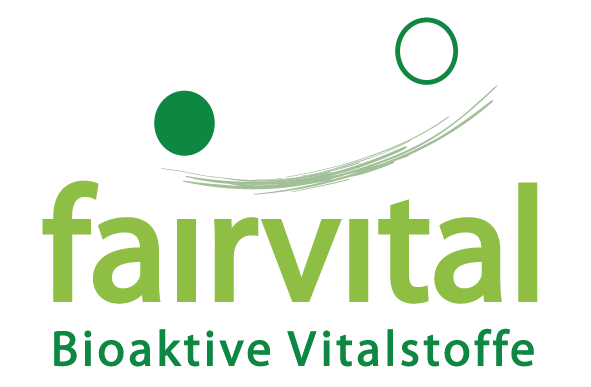
Carotenoids
Vital substance preparations with carotenoids in high as well as safe dosages can be found in Fairvital's online shop. Large selection and fast delivery! Carotenoids are naturally occurring colourings that can be found in plant foods. Carotenoids are an important part of our daily diet. The three most common carotenoids are beta-carotene, lutein and lycopene. Discover astaxanthin, the most powerful carotenoid in the plant world.
Filter products
- Vital substances
-
Applications
- Anti-Aging
- Eyes
- Ayurveda & TCM
- Beauty
- Blood sugar level
- Intestine & Stomach
- Energy
- Detoxification
- Memory & Psyche
- Joints
- Tissue Health
- Weight loss
- Hair
- Hands & Feet
- Heart & Vessels
- Immune system
- Bones
- Liver
- Passion
- Lungs
- pH-Value
- Men's health, bladder and kidneys
- Pregnancy
- Sports
- Vegan & Vegetarian
- Digestive system
- Menopause
- Mind & Sleep
- Nervensystem
- A-Z
- Sets
- Vitalexikon
- Top & New
- Gummies
- Pets
- Offers & Vouchers
- Catalogues & Literature
- Fairvital Blog
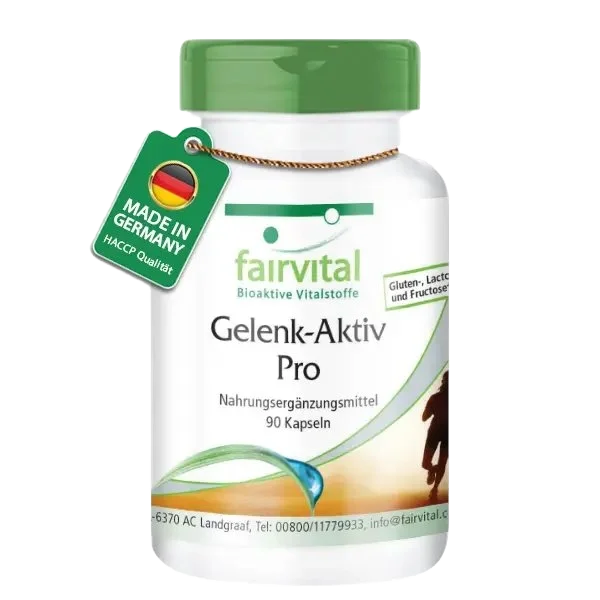
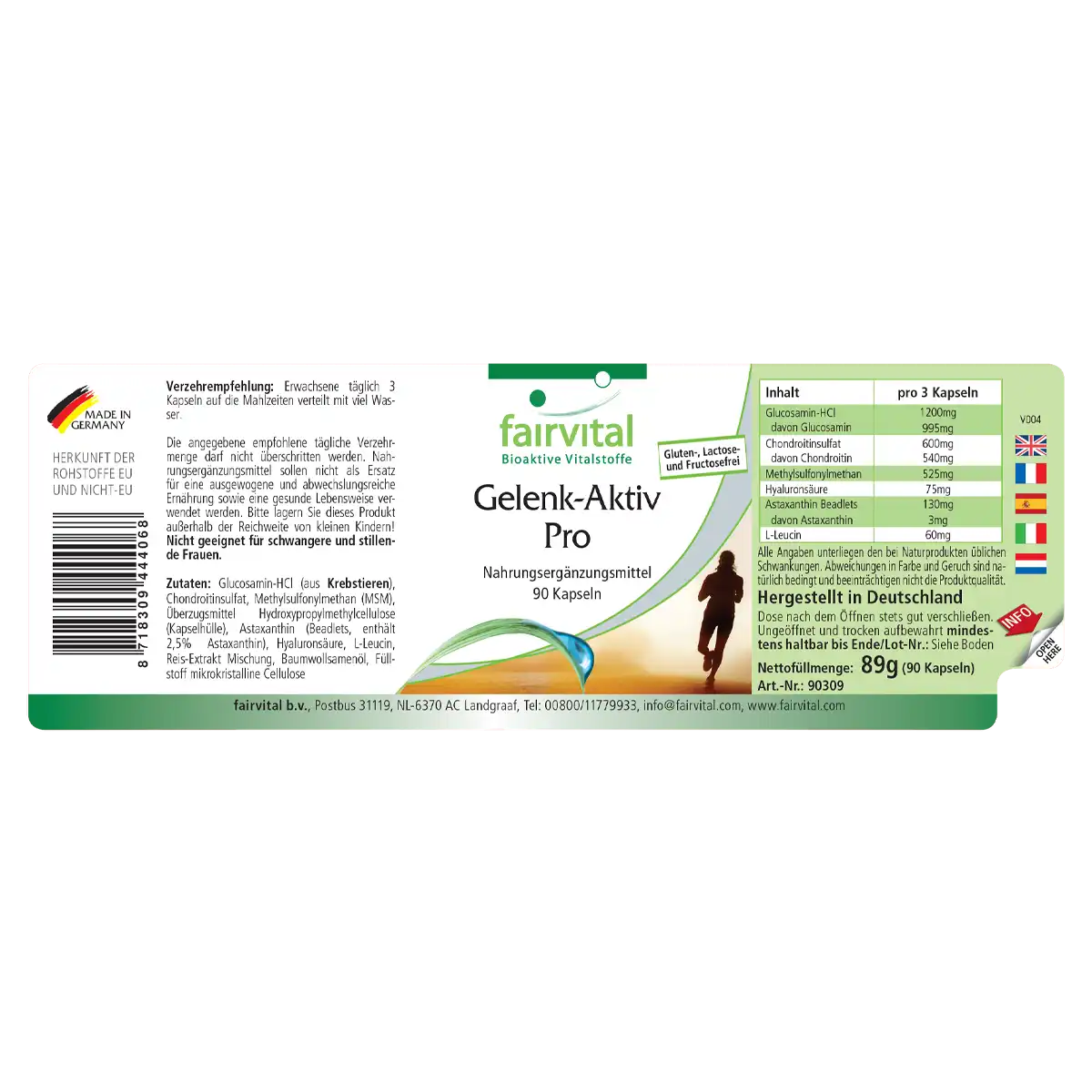
Average rating of 5 out of 5 stars
Experience 5 unique natural substances: glucosamine, chondroitin, MSM, hyaluronic acid and astaxanthin in one capsule Cartilage rests between healthy joints and serves as a natural shock absorber. In interaction with the synovial fluid (joint fluid), our joints remain supple and flexible. But the older we get, the less synovial fluid our body produces. Glucosamine Glucosamine is an amino sugar that is found in the human organism and is a component of cartilagewhich is found, for example, in the knee, elbow, shoulder or other joints,joint fluid and connective tissue is. Chondroitin Chondroitin is a mixture of mucopolysaccharides (also: glycosaminoglycans), which are naturally found in cartilage tissue and act as a buffer under pressure. The diverse tasks of MSM MSM (Methylsulfonylmethane) is organic sulfur and occurs naturally in the body, but levels decrease with age. Sulfur is present in every single cell in our body and is an essential building and fuel for connective tissue. Sulfur is essential for health and the production of cartilage, skin, nails and hair. It is also involved in the production of enzymes, immune cells, glutathione (an antioxidant) and amino acids. Hyaluronic acid: shock absorbers and lubricants Hyaluronic acid in synovial fluid acts as a lubricant in all joint movements. If we compare the joints of the human body with a car, the hyaluronic acid in the joint is roughly equivalent to the oil in the engine. We have to change the oil at regular intervals because heat, combustion residues, friction and oil aging reduce viscosity. The oil becomes thinner and is less able to protect the metal surfaces in the engine interior or to lubricate the engine. Hyaluronic acid plays the same role in our joints. If it is not constantly renewed, it loses its viscosity (thickness), becomes thin and is no longer able to absorb the compressive load on the joint. This leads to increased friction and wear and tear on the cartilage surfaces of the joints. What is astaxanthin? Astaxanthin is considered the strongest known plant antioxidant in the world. It is obtained from the freshwater microalgae Haematococcus pluvalis, which is particularly rich in the fat-soluble carotenoid. Buy glucosamine capsules complete joint formula thanks to 5 unique building blocks With Astaxanthin, the world's most powerful antioxidant Hyaluronic acid produced by fermentation gluten-free, lactose-free, fructose-free without magnesium stearate and silicon dioxide
Content: 0.089 kg (€263.48 / 1 kg)


Average rating of 4.7 out of 5 stars
Strong antioxidant Because its antioxidant properties are 6000 times stronger that vitamin C and 550 times stronger than vitamin E, astaxanthin is considered as the strongest known carotenoid of the entire plant world. highly dosed with 8mg per daily intake of 1 capsule antioxidant against free radicals derived from Haematococcus pluvialis strongest carotenoid of the entire plant world small capsules, easy to swallow gluten-free, lactose-free, fructose-free without magnesium stearate and silicon dioxide How does astaxanthin work? Early on, the fresh water alga Haematococcus pluvalis has aroused the researchers' interest. In 1797 the French scientist Girod-Chantrans investigated the approx. 0.1mm small green alga.In case of an exposure to strong sunlight or a state of nutrient deficiency, it forms a blood-red pigmentation, for which the astaxanthin is responsible. This protective function makes it possible for the alga to survive without food or water for more than 40 years. As soon as there is enough food and the weather conditions improve, the alga wakes up from its deep sleep and returns to its green active state. In biotopes such as ponds, small waterholes and even stoups, which are inhabited by the micro alga, a spectacular blood-red colour can occasionally be admired due to the alga's protective properties. Studies about astaxanthin The effect of astaxanthin on the skin appearance has been investigated in a study during which the test persons consumed 2 milligrams of astaxanthin daily. The skin was tested at three points in time to determine possible changes: at the beginning of the study, after two weeks and after four weeks. After only two weeks results could be documented. Improvements of the skin appearance could be observed in seven areas and after two more weeks dry skin showed a higher moisture content, less small lines, less pimples and a more regular fat content.Additionally, the test persons reported less swellings under the eyes and a higher elasticity of the skin. In the control group, which didn't consume astaxanthin, no effects could be documented. (Cosmetic benefits of astaxanthin on humans subjects*, Yamashita, E. 2002; Tominaga, K. 2012)
Content: 0.056 kg (€811.61 / 1 kg)


Average rating of 4.8 out of 5 stars
Beta carotene: For beautiful skin and healthy eyes Beta-carotene is probably the most well-known carotenoid of the more than 400 carotenoids in the plant world and also the carotenoid that occurs most frequently there. Carotenoids are among the phytochemicals that give vegetables and fruit their reddish or yellowish colour. The main sources are yellow and green leafy vegetables, yellow fruits, carrots, spinach, squash, broccoli, grapefruit, mangoes, peaches and tomatoes. However, it can be found in numerous other vegetables and fruits. Beta-carotene is the precursor of vitamin A and is therefore also called provitamin A. If there is a need for vitamin A, the body is able to produce vitamin A (retinol) from beta-carotene. This is of interest to population groups that get very little vitamin A from their diet. You can meet your daily vitamin A needs. by eating vegetables and fruits that are rich in beta-carotene Beta-carotene conversion It was previously assumed that 6 micrograms of beta-carotene is converted to 1 microgram of vitamin A in the body, but it is now believed that for 1 microgram of vitamin A double is needed, namely 12 micrograms of beta-carotene. Beta-carotene that is not needed is partially stored by the body for later conversion, with 80-85% being stored in the subcutaneous fat and 8-12% in the liver. How much beta-carotene is converted to vitamin A depends on how much vitamin A is already present in the body. This prevents excessive accumulation of vitamin A. Excess beta-carotene is easily excreted from the body. Beta-carotene is one of about 50 carotenoids that have a provitamin A effect and is the most active of these. Benefits of beta carotene for hair Vitamin A, which is formed in the body from beta-carotene, is necessary for cell growth in all cells, including hair cells. A lack of vitamin A can lead to dry, dull and lifeless hair and a dry scalp. Vitamin A can also promote hair regrowth. Beta carotene capsules from Fairvital gluten-free, lactose-free, fructose-free Easy to swallow softgels good for the eyes nourishes and protects the skin for beautiful hair counters to signs of aging in the skin supports the immune system without magnesium stearate and silicon dioxide
Content: 0.036 kg (€401.39 / 1 kg)


Average rating of 5 out of 5 stars
Carotenoid mix with anthocyanins: Even stronger thanks to the unique combination The plant-based carotenoids lycopene, beta-carotene, lutein and zeaxanthin in the Fairvital carotenoid mix together form an orthomolecular complex. What are carotenoids? Carotenoids are among the secondary plant substances. It is fat-soluble color pigments that give different types of fruit and vegetables their color. They can be found, for example, in yellow, orange and red plants and fruits, but green plants also contain carotenoids. There they are covered by the green color of chlorophyll. 500-600 different carotenoids are known, of which approx. 10% have a provitamin A property. This means the body can convert these carotenoids into vitamin A (retinol) as needed. The best-known carotenoid with a provitamin A effect is beta-carotene. Advantages of the carotenoid complex capsules from Fairvital purely plant-based Lycopene from tomato extract Lutein and zeaxanthin from marigold extract with anthocyanins from blueberries vegetarian and vegan gluten free, lactose free without magnesium stearate and silicon dioxide
Content: 0.056 kg (€445.54 / 1 kg)


Average rating of 5 out of 5 stars
Lutein: interesting carotenoid Lutein is an intensely yellow-colored substance that belongs to the group of carotenoids. It is mainly obtained from marigolds or marigolds, but is also found in leafy vegetables such as kale or spinach. There, like beta-carotene, it is masked by the green plant pigment chlorophyll. Like all carotenoids, lutein is fat soluble, which means it is best taken with a meal is taken so that the body can absorb it optimally. Lutein in the eyes In the body, the highest concentration of lutein is in the retina of the eye. It accumulates there in particular in the macula, the area of sharpest vision. Besides zeaxanthin, lutein is the only carotenoid found in the macula. Well protected by microencapsulation Lutein is very sensitive and reacts to exposure to light. It is not heat-resistant, oxidizes in contact with air and as a result loses its effectiveness. That's why this product contains microencapsulated lutein in the form of beadlets. So it is protected from oxidation and decay. Heat, oxygen and light can no longer affect the quality. The microencapsulation only dissolves in the digestive tract and releases the lutein. Lutein capsules from Fairvital highly dosed 20mg lutein per capsule obtained from the marigold (marigold) microencapsulated to protect against oxidation standardized to 20% lutein and 2.5% zeaxanthin gluten-free, lactose-free, fructose-free vegetarian and vegan without magnesium stearate and silicon dioxide
Content: 0.033 kg (€710.61 / 1 kg)

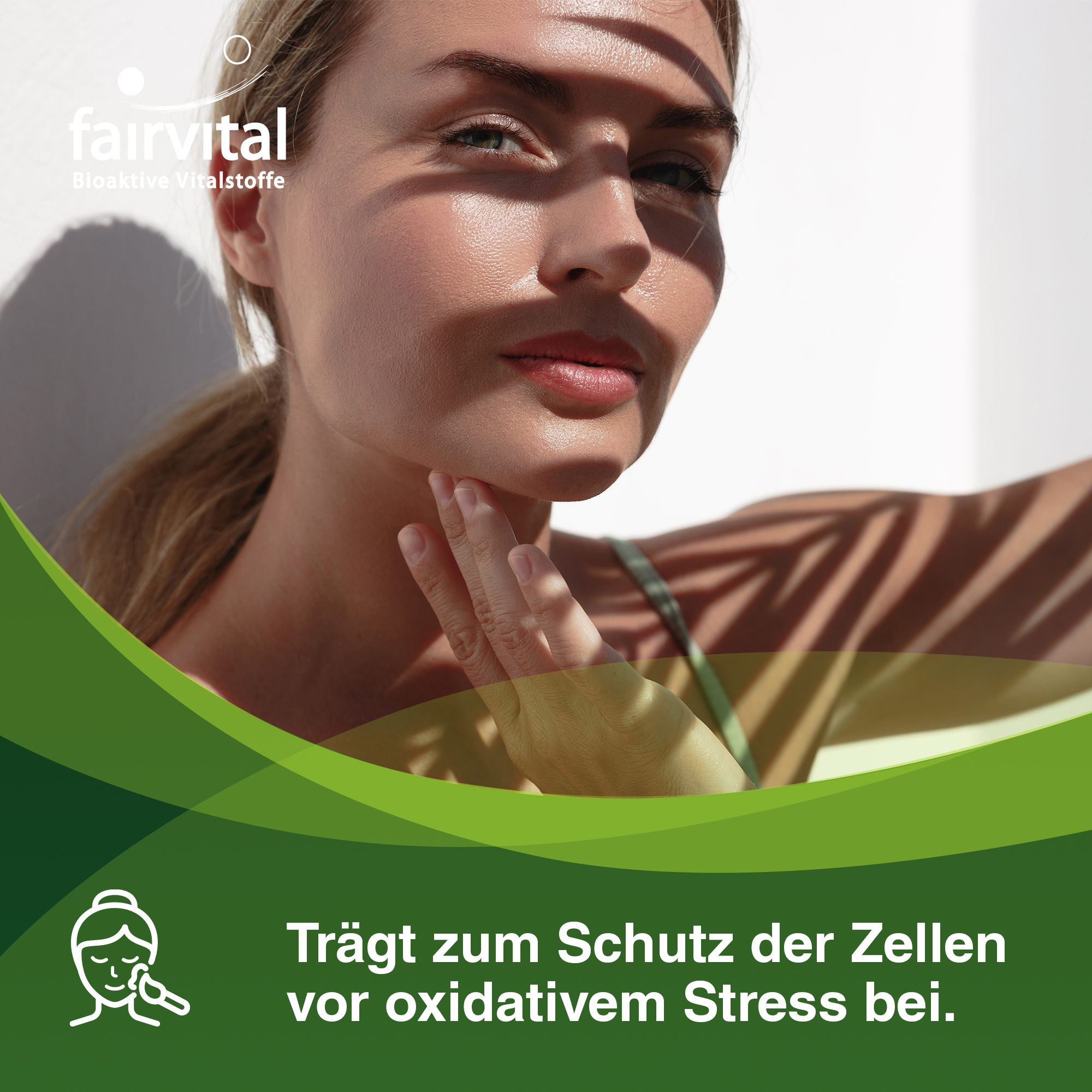
Lycopene, a member of the carotenoid family, is a powerful antioxidant found in tomatoes. Carotenoids are natural pigments in plants, serving to protect chlorophyll from oxidation during photosynthesis. Lycopene's strong antioxidant properties contribute to cellular protection. Vitamin E, another antioxidant, supports cell protection by neutralizing free radicals, which can damage cells and lead to oxidative stress. The form of Vitamin E in this product, D-alpha-Tocopheryl Acetate, is a provitamin that the body can convert to Vitamin E (alpha-Tocopherol) as needed. Lycopene in Foods: Lycopene is predominantly found in tomatoes, giving them their red color. It is also present in significant amounts in foods like rose hips, guavas, watermelons, and apricots. Processed tomato products such as tomato juice, tomato paste, tomato sauce, or ketchup have a higher lycopene content and greater bioavailability compared to fresh tomatoes due to the release of lycopene during processing. Vitamin E in Foods: High amounts of Vitamin E are found in various plant-based foods, particularly oils like wheat germ oil, corn oil, soybean oil, olive oil, and flaxseed oil. Nuts like walnuts and Brazil nuts are also rich sources of Vitamin E. Among animal sources, fish like lobster, mackerel, red snapper, and trout are notable. Buying Lycopene Capsules from Fairvital: Highly dosed with 25mg of lycopene per capsule Contains 6mg (9 I.U.) of Vitamin E Combines two important antioxidants for cellular protection Microencapsulated in beadlets to protect against oxidation Suitable for vegetarians and vegans Gluten-free, lactose-free, and fructose-free Formulated without magnesium stearate and silicon dioxide Please note that while Lycopene and Vitamin E offer antioxidant support, this product is not intended to diagnose, treat, cure, or prevent any disease. As with any supplement, it's essential to consult with a healthcare professional before use, especially if you have pre-existing health conditions or are pregnant or nursing.
Content: 0.056 kg (€400.89 / 1 kg)


Lycopene: valuable carotenoid Lycopene is one of the secondary plant substances and belongs to the class of carotenoids. Its name is derived from the tomato's scientific name: Solanum lycopersicum. It is a lipophilic (fat-soluble) plant pigment that gives the color to yellow, orange and red plants. Occurrence of lycopene Particularly high levels of the carotenoid lycopene are found in tomatoes, with the level depending on the degree of ripeness of the tomato. Lycopene is also found naturally in watermelons, red grapefruits, rose hips and papayas. Green vegetables also contain lycopene, but it is masked there by the green color of chlorophyll. Nevertheless, tomatoes remain the largest source of lycopene, both in raw and processed form. In addition, lycopene is used as a food coloring in the EU approved and can be found in numerous other foods. Lycopene Beadlets with 20% natural tomato lycopene In contrast to cheap products, the raw material used for Fairvital Lycopene Beadlets is not produced synthetically, but extracted from ripe tomatoes and is therefore a high-quality dietary supplement. Each capsule contains 5% lycopene. Due to the microencapsulation in the form of beadlets, both consistent, stable properties and the first-class quality of the lycopene are guaranteed. Lycopene capsules from Fairvital Lycopene Beadlets with 20% lycopene stable form through microencapsulation natural antioxidant vegetarian and vegan without magnesium stearate and silicon dioxide
Content: 0.032 kg (€764.06 / 1 kg)

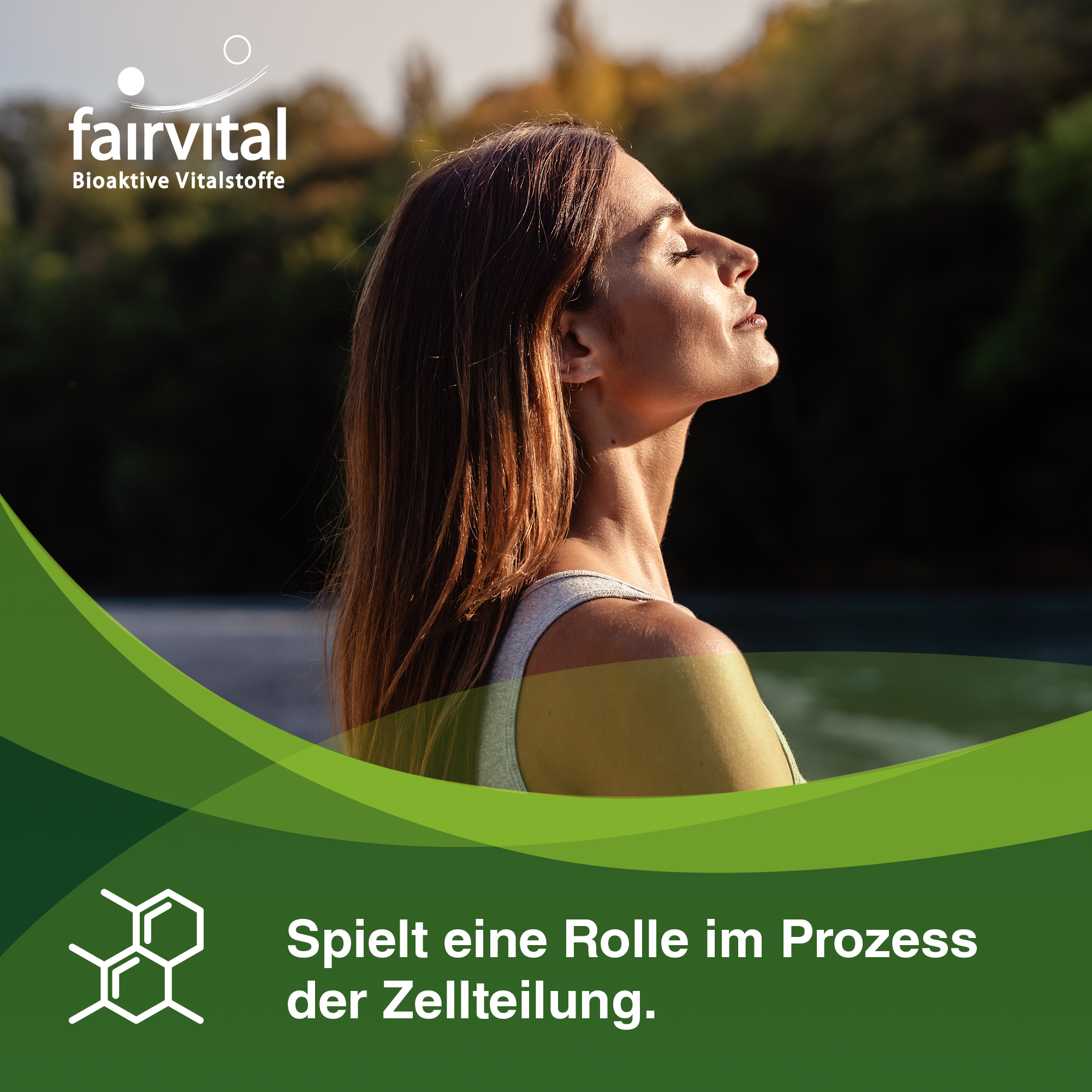
Average rating of 4.7 out of 5 stars
Selenium, Zinc, Lycopene, Saw Palmetto, Opuntia Ficus Indica and Beta-Sitosterol Use the potentiated properties of Prosta Complex through the combination of 6 different bioactive vital substances: saw palmetto, opuntia, zinc, lycopene, selenium and beta-sitosterol. Saw Palmetto The fruit of the saw palmetto primarily contains phytosterols such as beta-sitosterol and fatty acids such as caproic acid, palmitic acid and oleic acid. It also contains flavonoids and essential oil. The saw palmetto fruit extract in this product has been standardized to contain 25% fatty acids. Beta sitosterol Beta-sitosterol or beta-sitosterol belongs to the group of phytosterols. It can be found in pumpkin seeds, avocados, wheat germ oil, cottonseed oil and soybean oil, among other things. In this product we use high-quality plant sterols from pine, which contain at least 75% beta-sitosterol. strong> included. Opuntia Ficus Indica Opuntia Ficus Indica is a botanical member of the cactus family. The fruits are often referred to as prickly pear. The ingredients include vitamin C, selenium and flavonoids such as quercetin and kaempferol. Lycopene from tomatoes The secondary plant substance belonging to the carotenoids gives fruit and vegetables their characteristic red colour. Tomatoes and rose hips contain high concentrations. The Fairvital Prosta Complex contains lycopene beadlets that protect the lycopene from oxidation. They contain 20% lycopene from tomatoes, which corresponds to 5mg lycopene per capsule. All-rounder Zinc The essential trace element zinc helps, among other things, to protect the cells from oxidative stress. It also supports a normal function of the immune system and has a role in cell division. Trace element selenium Selenium is also one of the essential trace elements. Just like zinc, it helps to protect cells from oxidative stress (free radicals). It also contributes to sperm formation. Advantages of Fairvital prostate capsules useful combination of natural vital substances Lycopene from tomatoes in beadlets Well absorbable zinc gluconate ideal for men over 40 vegetarian and vegan gluten-free, lactose-free, fructose-free without magnesium stearate and silicon dioxide
Content: 0.065 kg (€337.69 / 1 kg)


High-dose zeaxanthin This dietary supplement from Fairvital provides you with high-dose, natural zeaxanthin from day flower extract. One capsule contains 10mg zeaxanthin. Bioavailability Zeaxanthin is a natural, orange-yellow plant pigment from the group of carotenoids and the group of phytochemicals. Over 800 different carotenoids are now known, 50 of which have provitamin A activity, which means that they can be converted in the body into vitamin A, including the well-known beta-carotene. However, unlike this, zeaxanthin cannot be converted into vitamin A. What all carotenoids have in common are their antioxidant properties and fat solubility. For this reason, it makes sense to always take food supplements that contain carotenoids with a meal or to always eat fruit and vegetables with some oil or butter, so that the valuable vital substances can be optimally absorbed by the body. Zeaxanthin in food As a phytochemical, zeaxanthin is primarily found in plant foods, with relatively high levels found in green leafy vegetables such as spinach, collard greens, lettuce and parsley. Other good sources of zeaxanthin are red bell peppers, corn and tangerines. Zeaxanthin can also be present in animal foods via the food chain, for example egg yolk or salmon. Occurrence in the organism In the body, zeaxanthin is always present together with lutein, since the two carotenoids are structurally hardly different and are closely related to each other. It can be found in all tissues and organs in different concentrations: e.g. in fat tissue, liver, testicles, ovaries, lungs, muscles or in the skin. Most interestingly, it is present with lutein in the yellow spot (macula) of the eye and can also be found in the eye lens. Zeaxanthin by Fairvital highly dosed 10mg zeaxanthin per capsule natural carotenoid obtained from marigold extract present in the yellow spot of the eye Antioxidant vegetarian and vegan gluten-free, lactose-free, fructose-free without magnesium stearate and silicon dioxide
Content: 0.02 kg (€747.50 / 1 kg)
